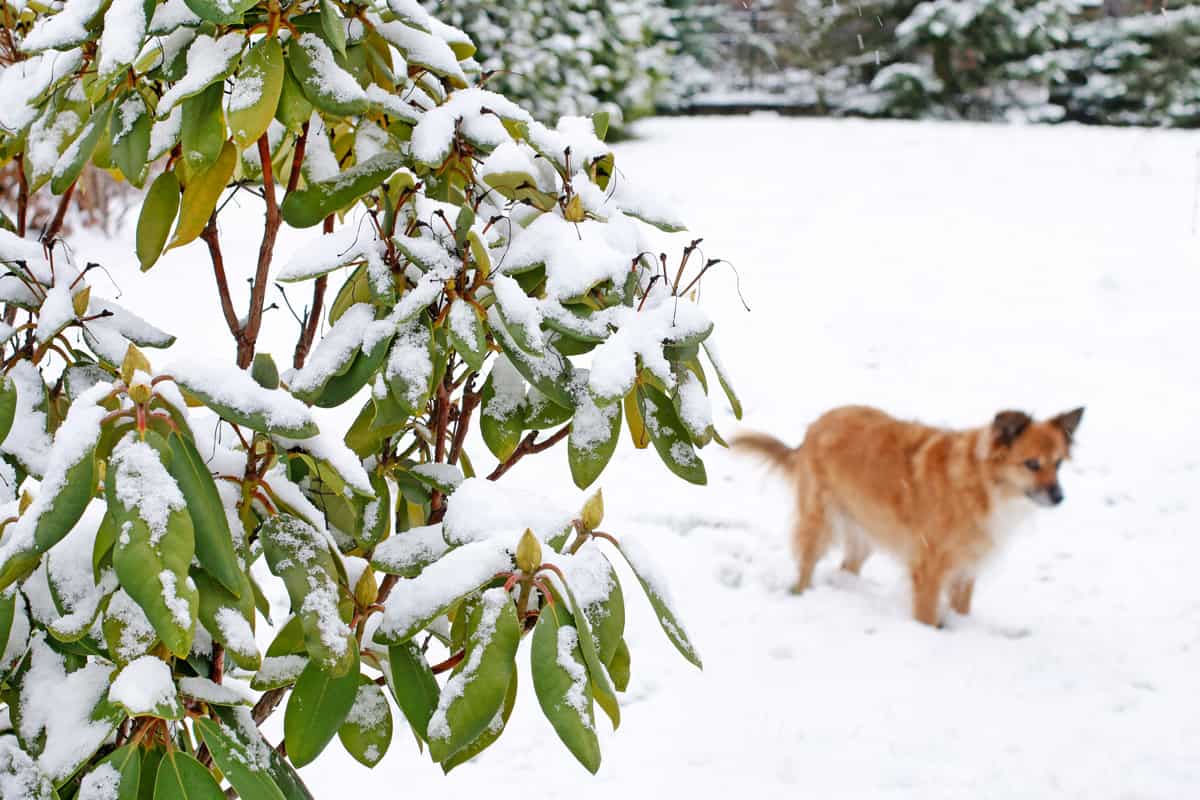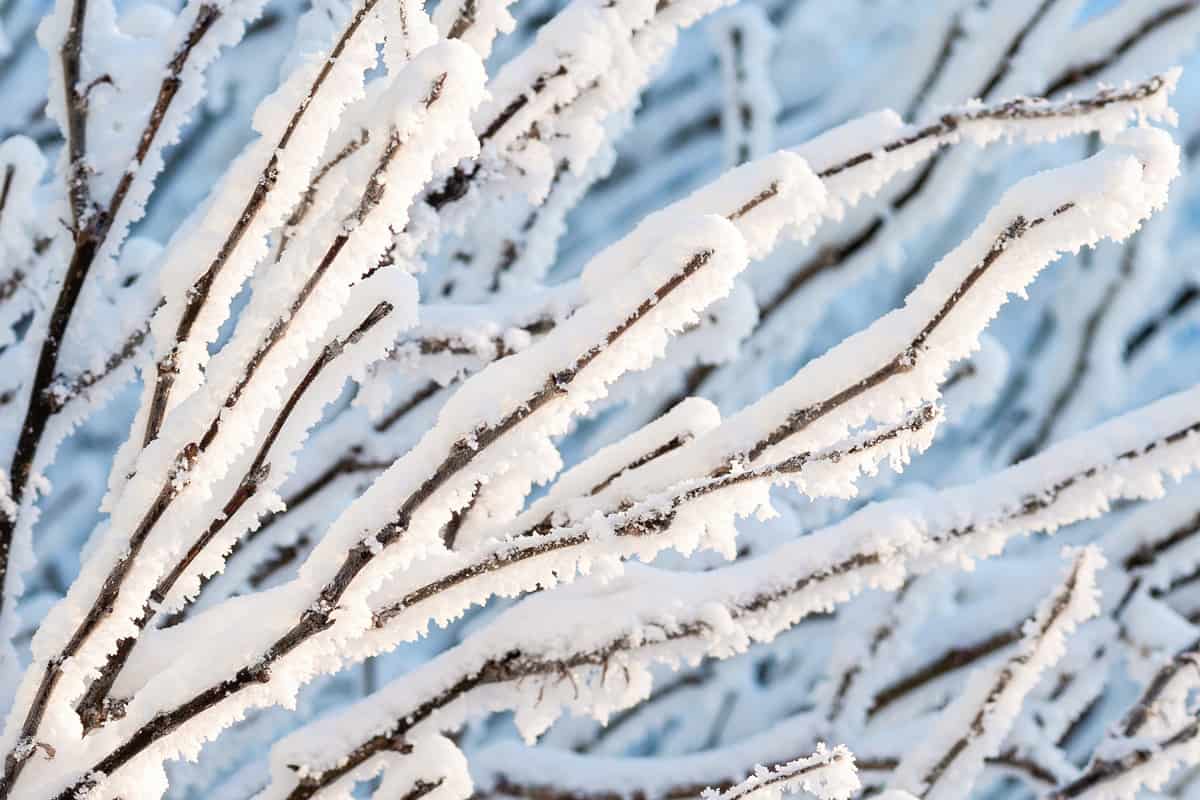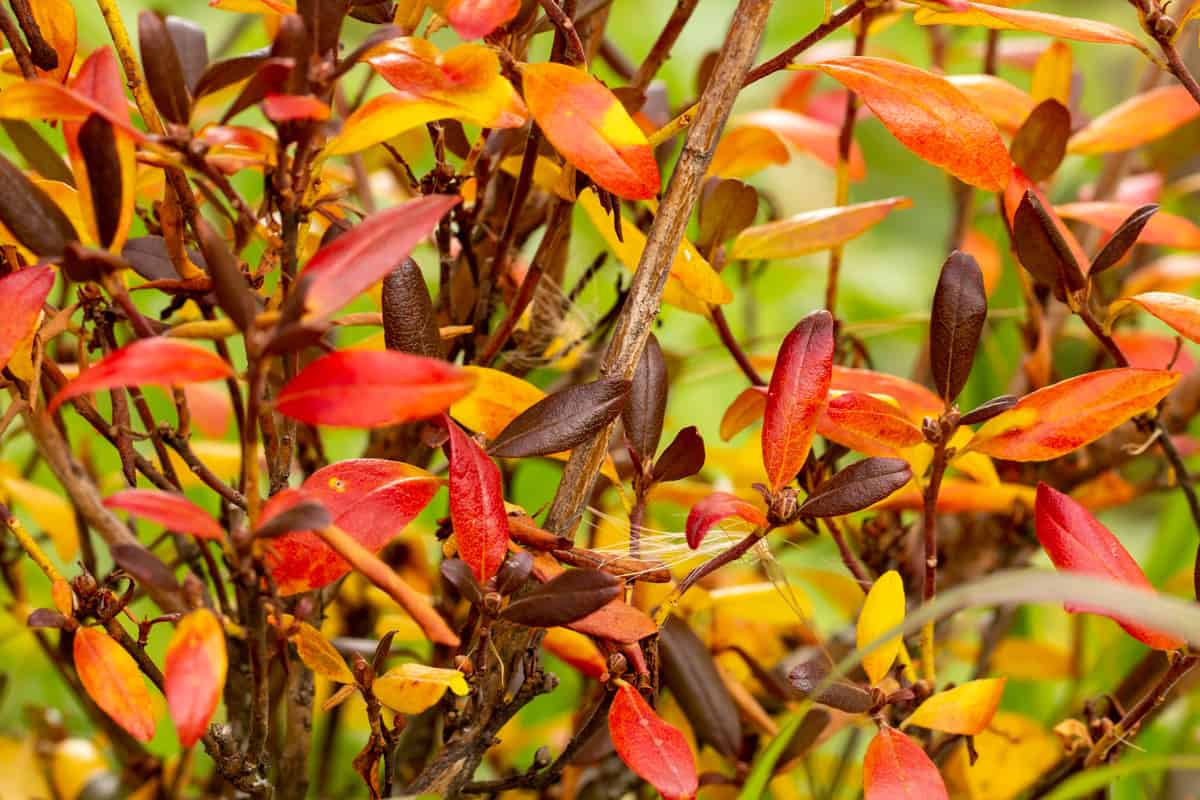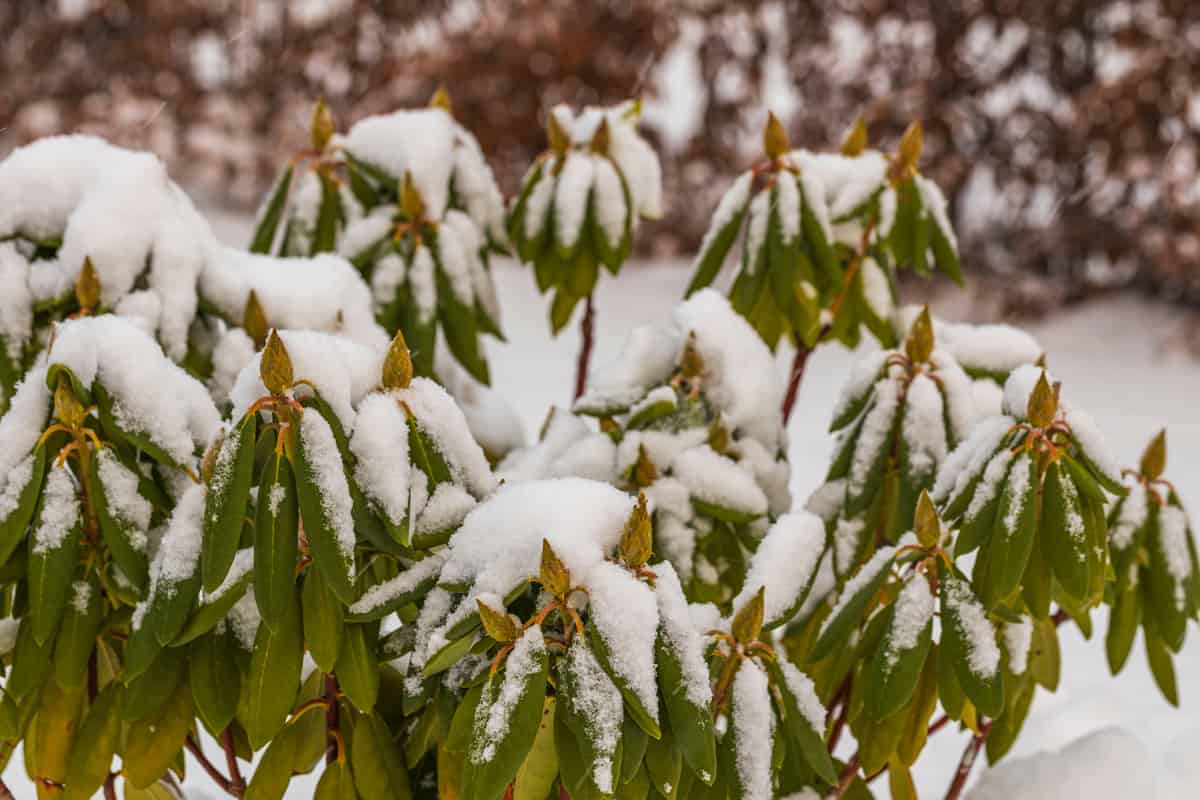The rhododendron is a popular perennial bush with fluffy pink blossoms. If you're considering adding one of these lovely plants to your garden, you might wonder if they lose their leaves in the fall and winter. This is especially important to consider if you live in a place with cold winters. Well, don't worry. We've done the research and will share the answer with you in this article!
Most rhododendrons are considered evergreen. However, similar to how conifers lose needles, they will lose some of their leaves every fall and winter. How much they lose depends on the variety.
While most rhododendrons are classified as evergreen, a few varieties are considered deciduous and lose most or all of their leaves during the cold months. They are commonly known as azaleas.
Additionally, the leaves of some deciduous varieties change from bright green to red, bronze, and purple in the fall.
In the rest of this article, we'll share some examples of rhododendron varieties from each category. Hopefully, this will help you decide which of these gorgeous flowering shrubs is the right choice for your garden!
So, let's get started!

Do Rhododendrons Lose Their Leaves In The Fall/Winter?
Most rhododendrons keep their leaves all fall and winter and are referred to as evergreen. That means that they'll be a spot of gorgeous color in your garden, even in the coldest months of the year. The exceptions to this rule are primarily found in the genuses R. mucronulatum and R. dauricum.
Deciduous rhododendrons are the varieties that lose their leaves every autumn, and they're often referred to as deciduous azaleas. A bit confusingly, all azaleas are rhododendrons, but not all rhododendrons are azaleas!
For this article, we'll use the terms rhododendron and azalea interchangeably to refer to shrubs that may have the common name of azalea.

Which Rhododendrons Keep Their Leaves In The Fall/Winter?
If you're interested in growing rhododendrons that provide visual interest in your garden all year round, you'll want to consider evergreen varieties. Here are some popular examples of evergreen rhododendrons:
R.' Elviira'
This rhododendron is on the smaller size, reaching heights of 2 feet after about ten years. It has big, bright red blooms paired with oblong leaves of glossy green. As a hybrid, it's hardy and can weather temperatures down to -25 degrees Fahrenheit.
R.‘Boule de Neige'
A bit taller than our previous pick, the 'Boule de Neige' tops off around 3 to 4 feet tall. Its flowers start their life cycle as pink buds, later growing and fading to fluffy white flowers, as the name suggests. This variety is easy to grow and tolerates cold to -25 degrees Fahrenheit.
R. 'Windsong'
The 'Windsong' variety has frilly, pale yellow blossoms set against shiny, dark green leaves. It can grow 4 to 5 feet tall and 6 feet wide over a decade, making it a good choice for a border or privacy block.
This premium variety is a little more challenging to find but worthwhile when you do due to its fantastic growing performance. However, it's also more sensitive to the cold, surviving only to zero degrees Fahrenheit.
R.' Nova Zembla'
This fuchsia-hued rhododendron loves the cold, and with its evergreen leaves, it also looks the part. At 5 feet wide and tall, it makes a gorgeous backdrop for the rest of your garden. It's tough, appreciates partial shade, and reaches peak bloom in mid-spring.

Which Rhododendrons Lose Their Leaves In The Fall/Winter?
As we discussed earlier, most leaf-shedding rhododendrons are in the genuses R. mucronulatum and R. dauricum. Many of them also change colors before shedding their leaves in late autumn. These varieties include:
R. calendulaceum
Also called the "Flame Azalea," this deciduous azalea commands attention no matter where you plant it. The flowers come in a variety of colors ranging from pale yellow to bright red.
Similarly, the leaves change from bright green in the summer to yellow and red in the autumn. Growing to a height and width of 6 to 12 feet, it would make a great privacy block or barrier.
R. occidentale 'Western Azalea'
As one of only two rhododendron varieties native to the west coast of North America, the Western azalea is a gorgeous addition to this list. Its pink or white flowers have a strong fragrance, unlike most rhododendrons.
Reaching heights of between 4 and 15 feet, this variety fades into warm shades of orange and yellow as the weather cools.
'Cecile' [Exbury]
This rhododendron hybrid originated in England and is a low-maintenance shrub that prefers low-light conditions. It grows to heights of 4 to 10 feet and widths of 4 to 6 feet and has big flowers in orange, red, and yellow tones.
Because of this, it's an eye-catching plant that could provide a great focal point for your garden.
Gibraltar [Exbury]
Another English hybrid, the Gibraltar azalea, has huge, burnt orange blossoms that bloom every spring. This variety can grow to 5 to 6 feet tall over ten years and is typically narrower than its height. As a deciduous variety, it can tolerate more sunlight than evergreens.

Which Rhododendrons Change Colors In The Fall/Winter?
Most lepidote, or scaly-leaved rhododendrons, change to shades of dark red, purple, and bronze in the cold-weather months. If you'd like to invite some beautiful autumn colors into your garden, you should consider one of the following varieties:
R. groenlandicum
This diminutive plant grows to only about two feet tall over ten years. It has small white flowers and can be used to make a type of herbal tea. Since it originated in Greenland and northern North America, it's very cold hardy and can survive up to -25 degrees Fahrenheit.
R. minus
Originating in the forested mountains of the mid-Atlantic United States, this variety thrives in damp and dimly-lit conditions. It has small, delicately colored blossoms of pale pink and white and grows to be about 3 to 6 feet tall and wide.
Be careful, though, because although this is a fantastic plant to grow to attract pollinators, it's incredibly toxic to humans and many animals!
R.' White Lights'
Covered with frilly pale pink blooms every spring, the 'White Lights' rhododendron is a tough hybrid that grows to heights of 4 to 5 feet. It can tolerate full sunlight in cold regions but needs partial shade to avoid scorching in southern sunlight.
Before the leaves drop each fall, they turn fiery shades of red, orange, and yellow.
R. luteum
Also known as the "honeysuckle azalea" because of its long, narrow yellow flowers, this rhododendron's foliage turns into bright red, yellow, and orange tones each autumn. Just don't try eating it, as the nectar is very poisonous!
It grows to about 4 to 5 feet tall and wide and grows well in partial shade in warmer regions.

What Do Rhododendron Look Like In Winter?
Since there are so many types of rhododendron, the answer to this question looks slightly different depending on the variety. We'll investigate each of the three categories discussed earlier so you can more easily visualize what your rhododendron will look like during the colder months.
If you're curious about other ways to care for your rhododendron over the winter, check out our article "Can You Cut Rhododendrons To The Ground?"
What Do Evergreen Rhododendron Look Like In Winter?
Evergreen rhododendron will retain their glossy green leaves all winter long. If you live in a snowy region, this provides a striking contrast against the white snow. Don't be alarmed if some of the leaves drop over the winter, as this is perfectly normal and doesn't indicate any problems with your shrub.
Your rhododendron's leaves might also droop when temperatures reach freezing and curl tightly at about ten degrees cooler. Don't worry because this is simply how the leaves protect themselves from cold temperatures and winds.
What Do Deciduous Rhododendron Look Like In Winter?
Since deciduous rhododendrons lose most or all of their leaves each fall, the structural quality of their trunk and branches will be revealed.
Although you won't have the vivid green of evergreen varieties, deciduous rhododendrons are an excellent choice if you'd like a shrub that will fade into the background every winter. Plus, many of these varieties turn beautiful colors before losing their leaves.
What Do Rhododendron That Change Colors Look Like In Winter?
As the name suggests, evergreen rhododendrons retain their bright to dark green leaves throughout the winter. This means you won't get a show of colors in the autumn. Therefore, rhododendrons that change color in the fall will lose their leaves by winter.
In Closing
While most rhododendrons are evergreen, some varieties lose their leaves in the winter. Many of these varieties are commonly known as azaleas, and their foliage turns red, orange, or yellow in the fall. We hope this article gave you some ideas of which rhododendron variety will be the perfect addition to your garden!
Check out this article for more advice on keeping your rhododendrons happy and healthy: "What Is Eating My Rhododendrons? 9 Pests To Consider."
